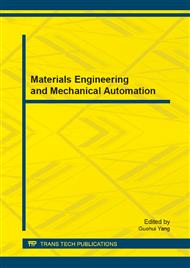p.494
p.501
p.507
p.511
p.515
p.520
p.526
p.532
p.538
Comparison and Assessment of Different Image Registration Algorithms Based on ITK
Abstract:
A lot of image registration algorithms are proposed in recent year, among these algorithms, which one is better or faster than the other can be only validated by experiments. In this paper, ITK (Insight Segmentation and Registration Toolkit) is used for verifying different algorithms as a framework. ITK framework requires the following components: a fixed image, a moving image, a transform, a metric, an interpolator and an optimizer. Dozens of classical algorithms are tested under the same conditions and their experimental results are demonstrated with different metrics, interpolators or optimizers. By comparison of registration time and accuracy, those practical and useful algorithms are selected for developing software in image analysis. These kinds of experiments are very valuable for software engineering, they can shorten the cycle of software development and greatly reduce the development costs.
Info:
Periodical:
Pages:
515-519
Citation:
Online since:
October 2013
Authors:
Keywords:
Price:
Сopyright:
© 2014 Trans Tech Publications Ltd. All Rights Reserved
Share:
Citation:


